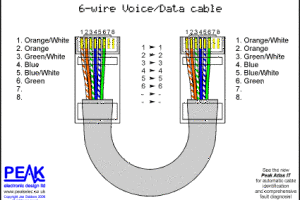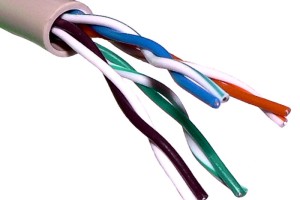The Materials of Network Cabling
The saying “a man is only as good as his tools” is particularly true in the case of structured network cabling. The tools and materials of network cabling industry are numerous and varied. From metal wiring and plastic casing to cutting and crimping appliances, the toolbox of a cabling technician is very specific to the field. While many cabling installers and techs could construct many of these materials from scratch it is cheaper for them, and the customer if they purchase these components in bulk and measure what is needed per job. Network cabling materials and tools have been modernizing and changing design as technology and information improves. However, many of the basic building blocks remain the same.
Wiring
When individual cables degrade, network cabling professionals will often repair a small length of cable or cable connection internally with the smaller materials that make it. Twisted wire cables are still in effect within many networks. These cables are made of a series of bundled, twisted copper wires with metal mesh and/or plastic casing to help separate and organize the information frequencies that run along them. A good structured cabling professional will keep these individual parts with him at all times, particularly copper wiring of various metallurgic percentages. The plastic casing and the metal meshes used to repair cables are also good materials to hold onto in this profession.
Cabling
Bulk cables are the heartbeat of the material inventory of a cabling tech. Telephone, ethernet and various other network and electrical cables are the main structural equipment of information networks. Telephone Cat3 wire, network Cat4, Cat5, Cat5e, Cat6 and Cat6a are common cables used to build networks. These networks can require shorter lengths of under fifteen feet of cabling or longer amounts of hundreds of feet, depending on the job at hand. Newer cabling designs bundle multiple types of cable into one cord, and include coaxial cable, ethernet cable and other multi-media needs inside one casing. Another sort of cable that is being more frequently utilized is fiber-optic cabling. These stretched glass cables are used most frequently to deliver image and sound based information quickly and efficiently. More difficult to make and thus more expensive, those professionals who use
Hardware
The hardware used to install and maintain cable networks is perhaps the most varied material component of the job. From wall-mountings and soft patches to adapters and connecters, hardware is where much of the creative problem solving is done in the network cabling profession. Cable boxes, wireless routers and even actual computers and network devices are also considered as the hardware of the network. Different situations require much different pieces of hardware, and thus network cabling technicians must be prepares with the right particulars for each circumstance.
Tools
Unlike materials, many of the tools used in structured cabling have a longer life, and can be used for many different purposes. Cables often need to be cut in multiple layers or crimped to clip them off. Tools to install cables to walls or in the ground are also utilized. One of the most important, and less sustainable tools in the cabling tool box is several kinds of tape. Electrical tape is especially needed.
With so many types of materials involved in cabling it might be more accurate to say “a structured cabling tech is only as good as his knowledge of materials and his preparedness to use those materials and tools to get the job done.”




